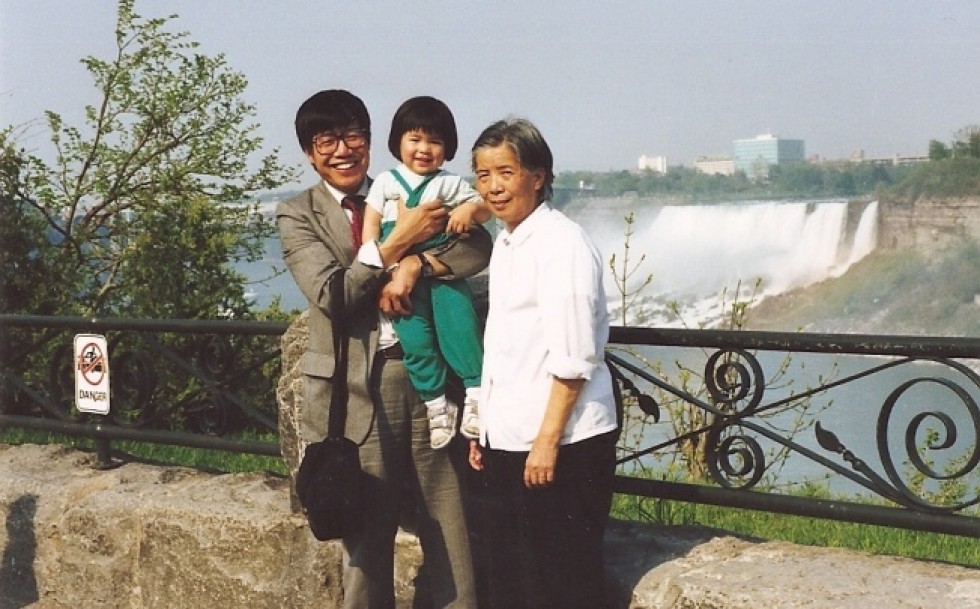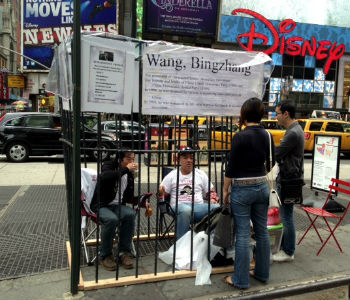
Free Wang BingZhang!
by Rebecca Landy
While China’s newest internet crackdown policy has made the news recently, considered by some as the harshest campaign against pro-democracy voices in Chinese society since the 1989 Tiananmen Massacre, pro-democracy activist Dr. Wang BingZhang continues to languish in a Chinese prison serving his 11th year of a life sentence in solitary confinement.
 Wang BingZhang received his PhD in coronary-arterial research at McGill University in Canada while on a Chinese government scholarship. After receiving his degree, he renounced his medical career to dedicate his life to pro-democracy Chinese activism. He found China Spring, the first Chinese magazine in the US devoted to China’s freedom, and also found several democratic parties and organizations. Dr. Wang has been in the custody of the Chinese government since July 3, 2002, after being kidnapped in Vietnam, where he travelled on June 27, 2002 to meet with Chinese labor activists. He was tried secretly on January 22, 2003 in a closed trial that lasted less than a day—violating internationally recognized concepts of due process—and was the first person to be convicted under China’s then new espionage and terrorism laws, which were passed in a post 9/11 anti-terrorism effort. His sentence is the harshest levied on a political prisoner since 1989.
Wang BingZhang received his PhD in coronary-arterial research at McGill University in Canada while on a Chinese government scholarship. After receiving his degree, he renounced his medical career to dedicate his life to pro-democracy Chinese activism. He found China Spring, the first Chinese magazine in the US devoted to China’s freedom, and also found several democratic parties and organizations. Dr. Wang has been in the custody of the Chinese government since July 3, 2002, after being kidnapped in Vietnam, where he travelled on June 27, 2002 to meet with Chinese labor activists. He was tried secretly on January 22, 2003 in a closed trial that lasted less than a day—violating internationally recognized concepts of due process—and was the first person to be convicted under China’s then new espionage and terrorism laws, which were passed in a post 9/11 anti-terrorism effort. His sentence is the harshest levied on a political prisoner since 1989.
Over the last few weeks, actions across New York City have called for the compassionate release of Dr. Wang. The kick off on September 9th was the staging of an art performance protest in Times Square, entitled “In the Cage with Wang Bingzhang.” The visual representation of this protest has the possibility of increasing its impact as it draws the attention of the viewer. The first night, Dr. Wang JunTao, Democratic Party of China Leader and an organizer of the Tiananmen Square student movement, sat in the cage with Dr. Wang Bingzhang’s elder sister, Yuhua (Linda), who was visiting from Canada and has not been able to see her brother for over four years due to a visa denial by the Chinese government for reasons they claim are privileged information.
Activists and passersby have continued to sit in this simulated ‘prison cage’ day and night, and are slated to do so through week’s end. They are inviting concerned citizens to come and sit in the cage to show their support. Artist and dissident Ai Weiwei (who has tweeted his support for Wang) has highlighted the role of art in Chinese democracy movements, where art and protest meet in performance. In this case at least, it seems the art has the potential to strengthen the protest message.
 On September 15th, UN International Democracy Day, a rally was staged outside the Chinese Consulate. As the UN designated theme for this year was Strengthening Voices for Democracy, it was apropos that the protesters called for the release of Wang BingZhang, a man widely regarded as the founding father of the Chinese pro-democracy movement abroad. Famous political commentator Chen Pokong hosted the rally. Highlights include an emotional speech from Wang Mei, Wang’s younger sister, who last visited her brother in prison in August and spoke of his deteriorating health.
On September 15th, UN International Democracy Day, a rally was staged outside the Chinese Consulate. As the UN designated theme for this year was Strengthening Voices for Democracy, it was apropos that the protesters called for the release of Wang BingZhang, a man widely regarded as the founding father of the Chinese pro-democracy movement abroad. Famous political commentator Chen Pokong hosted the rally. Highlights include an emotional speech from Wang Mei, Wang’s younger sister, who last visited her brother in prison in August and spoke of his deteriorating health.
Other family members outside the US participated by phone—including Wang’s youngest daughter, Ti-Anna, who has been an outspoken advocate for her father; Washington Post editorial page Editor Fred Hiatt, recently published a novel based on Ti-Anna’s efforts. The event concluded with a passionate and powerful speech from Dr. Wang Juntao, who spoke about when 24 years ago he was serving a 13 year sentence in Chinese prison, through the protests of people like his friend Wang BingZhang, then in New York, his conditions improved and he only served four years. Juntao closed his speech by saying that the people who create history are the people who carry out actions.
Down the street from the Chinese Consulate, back in Times Square, the voluntary simulated prison experience in support of Dr. Wang continues. In addition to the usual cast of characters and tourists in the area, such as ‘Spider Man,’ others have visited to show their support. Cuban democracy activist Antúnez, referred to as Cuba’s Mandela, stopped by. He shared his own experience of being jailed for 17 years. Despite Antúnez being primarily a Spanish speaker and the activists at the cage mostly speaking Chinese, the message was not lost in translation—both are fighting against the communist regime and for democracy. Antúnez and his comrades promised to lend their voices to help free Dr. Wang. These visits to the prison experience serve to reinvent the role the audience plays in art performance.
 Dr. Wang is a US resident and his family members are citizens of Canada and the US. The family of Dr. Wang; Friends of Conscience, a non-profit organization based in Canada, which is dedicated to advocating for the freedom of political prisoners in China; and the Democratic Party of China, based in NY, are coordinating these actions. Official statements by the UN Working Group on Arbitrary Detentions have declared his detention a violation of the Universal Declaration of Human Rights. The United States and Canadian governments have called for his release. Despite these efforts, Dr. Wang, who is now 65, continues to suffer in prison where he has developed several serious medical conditions that make his family fearful for his life. UN Special Rapporteur on Torture, Juan Mendez has stated that solitary confinement for even 15 days amounts to torture. Dr. Wang has been in solitary for approximately 4,430 days—surely this amounts to torture. Activists and Wang’s family vow not to stop until he is freed once-and-for-all. A hunger strike is being planned to take place in front of UN Headquarters in the upcoming weeks.
Dr. Wang is a US resident and his family members are citizens of Canada and the US. The family of Dr. Wang; Friends of Conscience, a non-profit organization based in Canada, which is dedicated to advocating for the freedom of political prisoners in China; and the Democratic Party of China, based in NY, are coordinating these actions. Official statements by the UN Working Group on Arbitrary Detentions have declared his detention a violation of the Universal Declaration of Human Rights. The United States and Canadian governments have called for his release. Despite these efforts, Dr. Wang, who is now 65, continues to suffer in prison where he has developed several serious medical conditions that make his family fearful for his life. UN Special Rapporteur on Torture, Juan Mendez has stated that solitary confinement for even 15 days amounts to torture. Dr. Wang has been in solitary for approximately 4,430 days—surely this amounts to torture. Activists and Wang’s family vow not to stop until he is freed once-and-for-all. A hunger strike is being planned to take place in front of UN Headquarters in the upcoming weeks.
These various protest actions, artistic and otherwise, aim not just to build awareness of the plight of Wang but also to grow the grassroots movement that will help amplify the voice of protest against the Chinese government. Art in particular can play an important role in engaging a broader audience and encouraging them to participate in human rights advocacy.
You can find more about this article by visiting INTLAWGRRLS website.
Leave a Reply